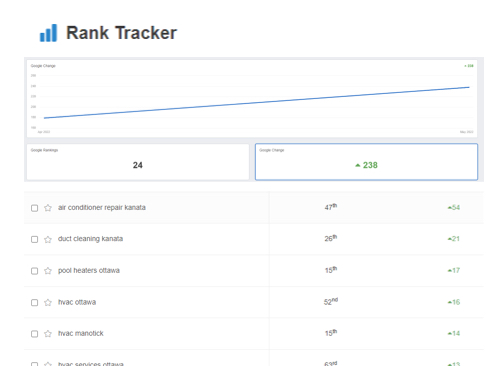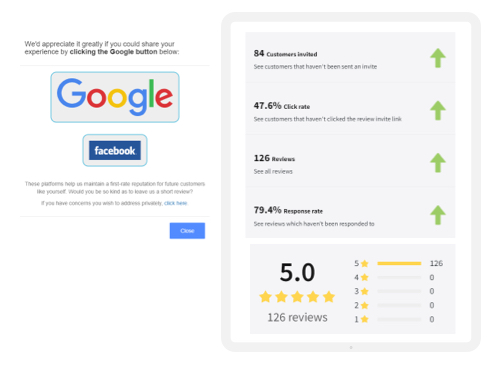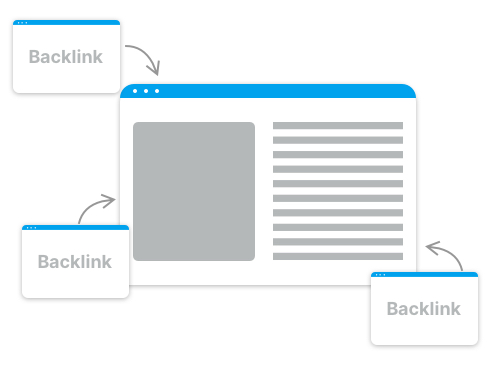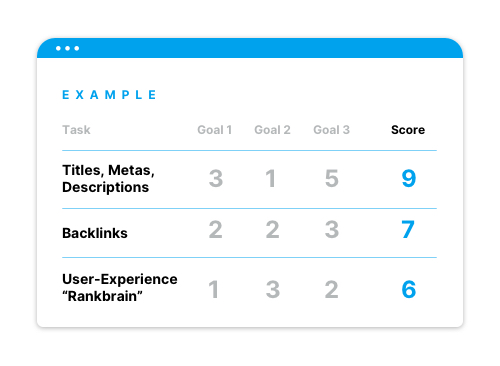
Like most website owners, you’d love to attract more traffic from Google. The only challenge is developing a strategy that will actually work. Doesn’t it seem like everyone has their own “magic recipe” for success these days?
As a fellow business owner that began with a non-internet service business, I understand the challenges posed by SEO…Like Neil Patel, I also hired another company at the start, and when I wasn’t ranking, I got frustrated not seeing any results. Shortly after taking things into my own hands, I figured it out. I hit the first page and started closing a continuous stream of business. Now I wonder how I ever survived without it.
I must admit that at first, it felt a bit UNFAIR if you will. I was getting all these clients that my competition wasn’t. But, I never complained of course…
Today, I’m going to share with you the secrets, so you too can Create an UNFAIR Advantage online. As an SEO enthusiast for 8+ years having helped hundreds of clients, I’ve made my mistakes, BUT I’ve also uncovered the sustainable strategies that WORK!
This article contains the 7 SEO Secrets I’ve compiled along the way. They are the same techniques I use day in and day out within our agency, continually generating success for our clients.
But first, I want to make one thing clear: This eBook is NOT for you if you’re looking for the next get-rich-quick shortcut. I don’t believe in overnight success. I believe in building businesses. One block at a time, one day after another – that’s what SEO is all about.
If you’re one of those nitty-gritty hustlers, a detail-orientated hard worker and a strategic thinker, this is for you. My goal is to help you understand what 97% of your competitors will never put the effort into learning…
1. Identifying Actionable Keyword Opportunities
Where Most People Go Wrong with Keyword Optimization
The majority of website owners only focus on trying to improve their search rankings for high-volume keywords, regardless of where they are currently ranked in Google. In addition to this, they make the mistake of not setting up and making use of any conversion tracking data in order to determine which search queries are actually leading to people taking action on their site, thus benefiting their business.
Pro Tips – How to Actually Use Keyword Optimization to Increase Organic Traffic (and Leads)
The first couple of things you need to be able to identify is which keywords are currently generating clicks to your website, and where you rank for these keywords. The best place to gather this data is using Google Search Console.
Search Console is a no-charge web service provided by Google that provides valuable insight into 4 key Google search metrics: impressions, clicks, click-through-rate (CTR), and average search position. It provides all these metrics for each search query that has ever been made by a user that has led to your website showing up in the search results (even if they didn’t click!).
The Goal: Identify the keywords that are ranking anywhere from the bottom of the second page to mid-first page, (Search Engine Ranking Positions (SERPs) 6-20th) and focus on improving those rankings.
Knowing that ~70% of clicks go to the first 5 search results, you want to get as many keywords ranking on the top of the first page as possible. The keywords that are almost there, ranking in SERPs 6-20, will actually provide immediate increases in traffic as their rankings improve.
Forget about spending efforts on improving keyword rankings from the 8th page to the 3rd page, which might look impressive, but actually provides no increase in traffic. (NOTICE: don’t be fooled, many agencies will focus reports on ranking improvements, instead of organic traffic increases.)
Remember, the goal of SEO is to ultimately INCREASE ORGANIC TRAFFIC, so focus on steady improvements, and don’t get caught up in the rankings of a few singular keywords.
Now, with a shortlist of actionable keywords, it is time to identify which URLs are ranking highest in Google for each keyword. This may not always be intuitive, and it is important to put your keyword optimization efforts into the correct pages.
Just because you have a specific service page that you think is “most relevant” for a given keyword, doesn’t mean that Google is ranking this page highest for that search term. There are many cases when a blog that has been highly shared, or your homepage will still rank higher due to its authority after considering all of Google’s ranking factors.
With a list of keywords established, and URLs identified, it is time to go to work! Put a focus on first optimizing titles, meta descriptions, headings, alt tags and keyword density to support your target keywords. Slow and steady wins the race with Google. Don’t change too much, too quickly!
Also, don’t forget to consider your conversion tracking data! It is very useful when it comes to keyword optimization. While the goal of SEO is to generate more organic traffic, the goal of your website is ultimately to generate sales.
Therefore, it is more important to focus on increasing your bottom line, and not just increasing traffic. So identifying the keywords that were searched prior to previous visitors’ conversions is a great way to find out which keywords will continue to lead to the most sales, with the least effort!

2. Reviews, Reviews and more Reviews!
Where Most People Go Wrong with their Review Strategies
When you only have one opportunity to make a first impression, don’t you want new customers to be positively influenced by all the good reviews they see online? Ironically enough, most businesses leave their review presence to chance.
This rarely works out well, since normally it’s only the unhappy customers that will go out of their way to review you, and at this point, it’s WAY harder to try and get good reviews in effort to bury the negative reviews.
As it turns out most business owners claim that they simply can’t be bothered to ask happy customers to leave a review. To support my earlier reference for building a business, reviews are one of the few things that can help you turn your past hard work into future sales opportunities. Reviews have value, and bad reviews can end up costing you a lot!
Avoid these common review mistakes:
- Not identifying which review networks are most relevant for your business/industry (Google reviews, Facebook reviews, Rate MD…etc.)
- Putting effort into your reviews for only a short period of time until you think you “have enough”
- Not responding to customer reviews, particularly to the negative ones (in a constructive way)
Pro Tips – Reviews Are the #1 Ranking Factor for Local SEO Rankings
A customer’s sales journey starts and ends with the influence of reviews. Reviews control the content they see as well as the products/services they end up buying.
Google has recognized the importance of reviews in the consumer decision-making process and has made them one if its most influential ranking factors, particularly for local businesses. And the great news is, this is a completely untapped market where you’ll have very little competition trying to stand out! (NOTICE: very few agencies actually help their customers get reviews, because it can be hard… ask before you buy!)
Ok, so you’re convinced of the power of good reviews, now what?
First, identify the review networks that Google values most for your business. Do this by directly searching for 3-4 of your direct online competitors. In the Google Business Listing data on the RHS of the search results, you’ll see review scores for the review networks Google considers to be most relevant for this particular industry.
For example, a service business would likely see a combination of Google, Facebook, Trusted Pros, HomeStars, and maybe even Yelp or YellowPages. Make a list and properly set yourself up on these networks. (TIP: Google values networks it owns most, so put a priority on Google reviews!)
With your review networks setup, it’s time to establish a process to collect reviews on an on-going basis! The 4 most important things to consider are:
- Google uses the QUANTITY of reviews you have to evaluate how many customers you’ve served. So yes, the total number of reviews is important.
- The RECENCY of your reviews speaks to the fact that you’re still in business, and successfully helping customers, thus can be trusted with Google’s traffic.
- A consistent VOLUME of reviews suggests to Google how big your business is – they definitely favour more established companies and brands. You want reviews to come in steadily, not in bursts, as Google will devalue reviews that appear unnaturally generated.
- The DIVERSITY of reviews throughout various networks further increases authority, showcasing well-rounded trust signals – which is exactly what Google is looking for. Think like a search engine, and everything will quickly make a lot of sense. Google uses as much data as it can in order to continue delivering GREAT search results.
This is a tried and true methodology that I’ve used with many clients and is now something that WebMarketers provides as a service. Check out our Review Management Services if you’re looking for help attracting a steady stream of customer reviews.
3. Long Tail Keywords Convert at Higher Rates
Where Most People Go Wrong with Long Tail Keywords
Business owners often find it difficult to think like a customer, and thus neglect the keyword journey that customers take before buying. Optimizing only for high-volume keyword opportunities (as discussed in section 1), generally means optimizing for keywords that represent only clients in the earlier stages of buying.
Making this mistake means that you’ll likely experience lower conversion rates if you’re lucky enough to generate traffic at all. Why might you not get any traffic at all? Because Google favours pages demonstrating “subject matter expertise,” often interchangeable with saying “more quality content.”
In efforts to provide enough detail on your page and avoid shallow content, stop thinking like a business owner and start thinking like a customer!
Pro Tips – Generate More Traffic and Leads by Optimizing for Long Tail Keyword Searches:
Users search in Google using a variety of different terms and phrases. If you only strategize around the obvious and more generic keywords, you are missing out on a large portion of the often more highly qualified searches that come in the form of long-tail searches.
These long-tail keywords are essential to helping build a solid keyword pyramid that aims to incorporate the full keyword journey and in such, tapping into the HIGH CONVERTING keywords.

Once you have built out your keyword pyramid(s) you should have a good list of long-tail keywords to target. But which keywords will provide the best ROI long-term? You don’t want to invest a lot of time and money into SEO rankings that don’t lead to sales!
A fantastic way to quickly determine which of these keywords will be the most profitable is to run a 1-month Google Ads campaign in order to gather some useful conversion rate data.
Why a Google Ads campaign if we’re talking about SEO?
Visitors from Google Ads have similar conversion characteristics to those that would otherwise click on an organic first-page search result. Therefore, if you want to test how well your SEO efforts will pay off once you hit the first page, the secret is to use Google Ads first to gather data.
Knowing which long tail keywords convert at the highest rate gives you a clear FOCUS when it comes to working on your SEO and improving your website’s organic rankings. It will help you determine which keywords to allocate your time and efforts towards as well as provide a focus for the types of content you should focus on building out throughout your website.
4. Optimizing your Website’s Overall Usability and Performance
Where Most People Go Wrong when Optimizing Their Website’s Performance
Given that you’re an expert in your field, it can be difficult to put yourself in the shoes of your customers. Because of this, most website owners will often overlook the overall user experience of their website. The user experience can be broken down into two major factors, page speed and user experience. As the owner of your site, just because your site loads quickly and is easy for YOU to read, doesn’t mean that everyone will experience it in the same way.
Pro Tips – How to Keep Visitors on Your Site Through ENGAGING Design
To put it bluntly, the average web user’s patience has decreased immensely! Professional websites need to be properly compressed so that the site files are as small as possible so that pages can load quickly.
According to a recent study, the average load time (AKA: speed index) of a website is 8.66 seconds with an average page size of 1.88 MB.
Being a frequent visitor of your own site, you will have the majority of files cached on your computer. This often makes things look and run smoothly for you, but it doesn’t guarantee that things are loading quickly for first-time visitors.
If you are curious about what the page load speed of your website looks like, check your WebMarketers SEO Report, or check out Google’s more comprehensive (and free) tool called Lighthouse. Lighthouse provides a full breakdown of page load speeds as well as opportunities for improvement.
It doesn’t matter how much amazing content and how well designed your website is if it takes forever to load! The reality is that most visitors won’t be patient enough to wait if things are too slow…
With regards to user experience, putting yourself in the shoes of a customer is a tactic that is often overlooked when building a new website. You want to make sure that each user visiting your website can easily locate the exact page that would best fit their needs. Then, it’s important to have a clear way to get in touch with you for more information, often in the form of a clever call-to-action.
This is often easier said than done! You want to find a nice balance between quality content, imagery and calls to action (CTA’s). Too much of any of those three can cause visitors to get lost on your site, and not in the way where they are happily lost in joy.
Don’t forget, a good user experience is all about a simple layout, good navigational structure, and clear CTA’s.
When our design team at WebMarketers is working on a new page, we often use a Gaussian blur test. This is something that we’ve come up with to ensure the page has a clear and simple layout while still engaging CTA’s.
Try it yourself, by taking a screenshot of your homepage, then add a 20px Gaussian blur to the whole image. Then, put the image in front of people that haven’t seen the page before, and ask them to point to the first thing their eyes are drawn towards. If they consistently identify your CTA’s, then the page passes the test! If not, chances are your CTA’s should be better designed with a more prominent colour and/or location.
5. Building Out Your Website’s Online Footprint
Where Most People Go Wrong With their SEO Strategies
When the topic of SEO comes up, most people naturally gravitate towards discussing on-page strategies. Yes, this is the most important part of SEO, but as a close second, you cannot ignore your off-page presence. There is a whole other side to SEO that involves building a strong off-page footprint that most website owners neglect.
If we were to make the analogy that SEO was someone trying to get a job, your on-page SEO would reflect your resume and it is your off-page footprint that will tell us how highly recommended you come by others.
Pro Tips – How to EASILY get Backlinks with Minimal Efforts
Each website has a digital footprint and maximizing that footprint is vital to improving how confident Google is about ranking you on the first page of search results.
Google’s main goal is to connect people using their search engine to the information that best helps them with their search query. If your website continuously receives visitors from 3rd party sites and helps them find the information they’re looking for, you’ll see that your rankings will steadily climb.
But, building out a strong off-page presence can be challenging. It isn’t uncommon that only 20-30% of the links you attempt to build will actually work out.
Thankfully, there’s a shortcut to getting valuable links with a much higher success rate. Simply copy what’s already worked for your competitors!
Using Backlink Watch, you can type in your competitors’ websites and it will return a list of all of their current backlinks, including a score of how valuable the link is, since not all links are valued equally. You can then use this list as the framework for your link-building campaign and since your competitor has already been successful getting the link picked up, you’ll likely be successful too!
When you have a link on a 3rd party website pointing back to your site, Google recognizes this as a “vote of confidence” for your site. Naturally, getting links from more authoritative websites will give you the BIGGEST BOOST to SEO.
Having a 3rd party website link back to your website is a great first step, but you will also want to build out your NAP citations. NAP stands for Name, Address, and Phone Number. These types of listings will often be seen across local directory websites or social outlets. Also, according to Moz’s Local Search Ranking Factors, 3 out of the top 6 “Foundational Ranking Factors” are related to NAP Citations.
NAP’s are especially important for local businesses as Google uses these citations when determining which companies to rank in the geo-targeted searches.
Another way to generate links from trustworthy sites is to use Help A Reporter Out.
HARO is a service that helps news reporters connect with industry experts when they need a trusted source. As an industry expert, this can be a good place to keep an eye out for someone who could benefit from your expertise, and in return, they’ll often credit you with a link to your website.
Check out the Majestic SEO Chrome plugin if you’re looking for a good source to evaluate your off-page presence!
6. Maintaining a Well-Organized Information Architecture
Where Most People Go Wrong when Structuring their Website
While many websites are filled with great information, they are often organized backwards. Why does this happen? Because most business owners build their websites based on an “inside-out” approach. They take what THEY know about their business and its internal structure and then use this to organize their website.
This type of approach often leads to sites with a poor user-experience and pages that lack content that will rank highly for what USERS are searching for.
If your content is not properly organized and users can’t find the information they are looking for, they will “pogo-stick” back to Google and click on one of your competitor’s websites instead. Not ideal! Not only does a well-organized information architecture lead to happier visitors, it also helps Google index your content in a more structured manner.
Pro Tips – A Solid Information Architecture Produces Higher Rankings
One of the first steps to organizing your content effectively is to ask a few outsiders to describe your business. Listen carefully, because this is the information that will help guide an ideal user experience.
Websites need to be first moulded around the client journey and then filled with quality information from the hands of a business owner. The key here is first to satisfy how outsiders are searching for a business like yours. Then once you’ve captured their attention, you can carefully educate and guide them according to your expertise.
Figuring out how customers are searching can be accomplished with keyword research. Use your keyword research to group related keywords, which will, in turn, guide the categories and products/service pages on your website. This is what we refer to as your website’s information architecture or sitemap – which is your blueprint to SEO success.
Oftentimes, I see businesses describe their services on their website as winter services and summer services. While this makes sense from their perspective because that is how they think about the operations of their business, the bottom line is that nobody is typing that into Google. Even worse, they put all their summer services on one page, and winter services on another. Again, nobody searches for “summer services contractors”.
What they SHOULD be doing is making a unique page for each group of keywords related to the type of service that a customer could be looking for! A page for lawn care. A page for pool cleaning. A page for snow removal. A page for renovation contractors etc. Because people DO search for “lawn care near me” and “renovations contractors in Ottawa.”
Mapping out your information architecture is easily accomplished with a free online tool called Draw.io. By using this tool you can easily create (and later edit) a wireframe for your website, guiding web design and SEO efforts.
Before you get started on creating your perfect information architecture wireframe, here are the 2 most important factors to keep in mind:
- Clean and Clear Menu Navigation: Your main navigation menu is the Grand Central Station of your website. It routes visitors wherever they are going and having a clear and easy to use menu makes it easy for visitors to get to the pages they are looking for, making it easier to CONVERT! If your menu is packed with misleading titles, has no clear flow of information, or is filled with many similar options, your visitors will end up at the wrong destination and leave your site in frustration.
- Ensure Each Page has a Clear Focus and Purpose: When you are building your main service pages and product pages, you want to make sure that each page has a clear focus on that specific service/product. Let’s say for example you are a lawyer who wants to rank well for “personal injury,” then it is important to have a page focused specifically on personal injury legal services.
When Google is looking for the page that is most relevant to that search term, you want your page to be 100% dedicated to that subject, showcasing the most possible subject matter expertise.
7. Prioritizing Opportunities to Achieve your Goals Faster!
Where Most People Go Wrong When Prioritizing What They Work On
When the average website owner wants to improve their website’s rankings and overall traffic, they often bounce from one SEO idea to the next. This lack of planning has them spinning their tires, and never really achieving success with any level of efficiency. This is where we see many people lose hope and turn to paid market strategies.
Pro Tips – Use a Weighted Decision Matrix & know EXACTLY Where to Start
By now, you probably have a good idea about how SEO works and how to position your website for success, but the timeless question still remains… Where do I start?
From one SEO report to the next and one person’s advice to the next, you probably have a long list of possible improvements. This is great! Continue expanding your list of SEO opportunities until you feel you’ve covered all your bases.
Next, consider 3 or 4 of the BUSINESS GOALS you’re looking to accomplish. Perhaps it’s more traffic, better conversions, mobile-friendliness, better brand awareness, etc.
With your opportunities identified and your goals set, you can now go about creating a Weighted Decision Matrix.
A weighted decision matrix will act as an unbiased tool to help you determine which SEO opportunities will help you achieve your goals fastest.
First, start by making a list of the opportunities on the vertical axis and then write your goals on the horizontal axis. Don’t worry there is an example below that you can follow!
Next, score each opportunity from 1 to 10 based on how much impact they will have on attaining each goal. Now, add up each row to generate a total score for each opportunity. Now, sort the “total scores” column from highest to lowest and you will quickly see the order in which you should tackle your opportunities. The higher the final score, the more of an impact it will have on helping you attain your business goals!
Simple, right!?
BONUS: Avoid These Common Mistakes
If you’ve made it through this e-book then you’re clearly interested in improving your business! Now that you have a solid foundation as to how to best optimize your website for SEO, I’m going to pass along a few other quick tips. To avoid the suffering, try to avoid these common mistakes that I’ve seen so many people make:
No Redirections in Place for Old URLs
When you’re launching a new site, it is crucial that you have a permanent redirect in place for any of your old URLs that are no longer in existence.
You don’t want to simply forward all of the old URLs to the new home page as that would hurt your current Google rankings. You will want to forward each old URL to the page on the new site that would best represent the content from the old page.
No Sitemap Uploaded to Google Search Console
Imagine being given a large encyclopedia without any table of contents and then told to research a certain topic that may or may not be inside the book. It would be a huge pain trying to search through the whole book to find the section you want without an index. To Google, your website is this giant encyclopedia and your sitemap is the table of contents.
Using Google’s Search Console, you can upload your sitemap so Google has a clear picture of where information is located. This will greatly improve how Google views your website and in turn improve how it is ranked.
Under-utilizing Category Pages
For e-commerce websites especially, it is your category pages that will likely rank highest in the search results. Don’t forget to include content on your category pages that accurately describes what type of products you’re selling, as these are the most important pages for e-commerce SEO.
Not Compressing Images
Recognizing the benefits of REAL photography, you recently made the investment to get professional photographs taken for your website, awesome! Your photographer sends you the images, they look fantastic, so you immediately upload them to your website. But, did you consider the size of the image files?
Optimizing and compressing your images so they balance quality and size is very important. Having large images throughout makes your site slow to load, and as we mentioned before, long load times kill your SEO!
Not Thinking Like a Customer
Consider searching for your business from a customer’s standpoint, not yours. You are already educated about what you do and likely familiar with jargon terms most consumers would not know. Coincidentally, the jargon terms rarely get many searches either.
Your website’s main focus should be to appease its visitors, then bridge them into your services. Thinking like a consumer is tricky when you are an expert in your field, which is where a third-party marketing agency can come in handy!
It takes quite a bit of experience to be able to balance an understanding of your business with the keywords that your target customers are using in Google. These results can often be quite different compared to what you’d expect!
So, what are you waiting for!? Kick off your very own SEO campaign with a weighted decision matrix.
Need a little help? Contact us.





